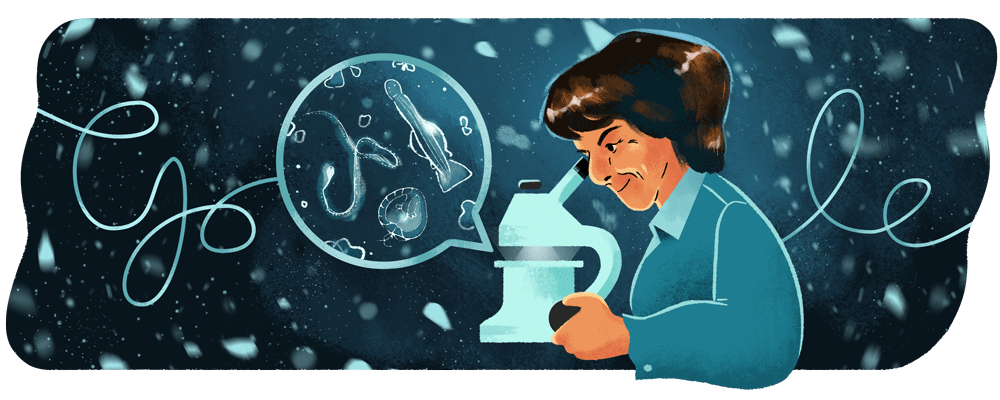
The latest Google Doodle celebrates the 105th birthday of oceanographer and plankton researcher María de los Ángeles Alvariño González.
Life of María de los Ángeles Alvariño González
María de los Ángeles Alvariño González — more commonly called Ángeles Alvariño — was born on October 3, 1916, in Serantes, a small coastal town in northeastern Spain. At an early age, Alvariño developed an interest in science and especially zoology by reading books in her father’s library.
While attending college in Madrid — having already graduated summa cum laude from the University of Santiago de Compostela — Alvariño’s formal education was disrupted sometime after the onset of the Spanish Civil War in 1936. With this time, she turned her attention to learning English and French, which would later help remove some language barriers in her studies abroad. After the war, she was able to finish her master’s degree and then teach subjects like biology and zoology.
At the time, in Spain, women were not allowed to board Navy Spanish vessels, a restriction that barred Ángeles Alvariño from studying with the Spanish Institute of Oceanography. However, in 1952, due to her impressive work as a professor, she was specially appointed as a marine biologist. This allowed her to be the first woman to serve as a scientist aboard a Spanish exploration vessel. Her feat would be repeated a year later when Alvariño received the opportunity to study zooplankton as the first woman scientist on a British ship.
Zooplankton, one of Ángeles Alvariño’s primary areas of research throughout her career, are a wide range of often microscopic creatures which act as food for larger sea creatures, and before the 1960s were a rarely researched subject. Through her studies on the British vessel, Alvariño was able to notice unhealthy changes in the species of zooplankton in parts of the Atlantic Ocean.
In 1956, Ángeles Alvariño moved to the United States at the invitation of the Fulbright Commission, to continue studying zooplankton. During her time researching in the US, Alvariño discovered 22 new species of plankton, as well as create a model of how the many species of plankton are distributed around the world’s oceans. All the while, she continued to be a faculty member of universities in the US, Mexico, and Brazil.
María de los Ángeles Alvariño González died on May 29, 2005, in San Diego, California. Among other posthumous honors, the Spanish Institute of Oceanography named a ship “Ángeles Alvariño,” which was launched in 2012 by her daughter.
Ángeles Alvariño Google Doodle

The Google Doodle crafted in honor of María de los Ángeles Alvariño González features the biologist viewing a few different species of zooplankton under a microscope. The microscope view serves as the second “o” in “Google,” while the illustration of Alvariño serves as the second “g.”
More Google Doodles:
- Google Doodle honors Rodolfo ‘Corky’ Gonzales, boxer, poet, and activist
- Google Doodle celebrates company’s 23rd birthday w/ a cake
- Google Doodle celebrates 69th birthday of Christopher Reeve, ‘Superman’ actor and activist
Author: Kyle Bradshaw
Source: 9TO5Google



